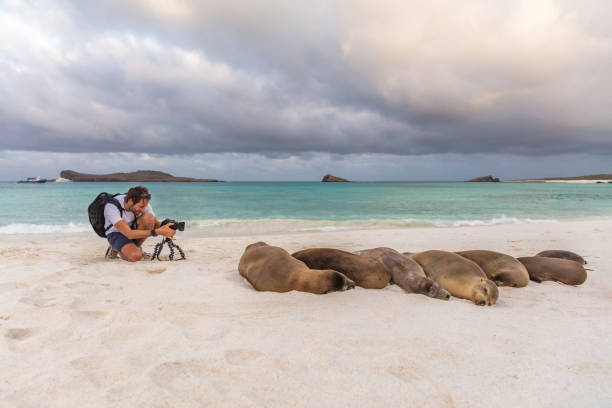
Nestled in the Pacific Ocean, the Galapagos Islands stand as an untamed paradise like no other. Located 620 miles off the coast of Ecuador, this volcanic archipelago is a treasure trove of biodiversity and a living laboratory of evolution. Its unique geography, diverse ecosystems, and abundant wildlife have captivated the hearts and minds of adventurers and scientists alike, making it a must-visit destination for nature enthusiasts.
The Galapagos Islands are renowned for their crucial role in shaping Charles Darwin’s theory of evolution by natural selection. During his voyage on the HMS Beagle in the 1830s, Darwin observed the distinct adaptations of the local species and their remarkable ability to survive in isolated and challenging environments. This profound experience laid the foundation for his groundbreaking book, “On the Origin of Species.”
The archipelago consists of 21 major islands and numerous islets, each with its own distinctive landscapes and endemic species. The Galapagos’ isolated location has allowed life to evolve independently, leading to the development of unique and diverse fauna. Giant tortoises, marine iguanas, blue-footed boobies, and Galapagos penguins are just a few of the extraordinary creatures that call these islands home.
One of the most iconic sights in the Galapagos is the giant tortoises, which can live to be over 100 years old. These gentle giants roam freely across the islands and serve as living relics of ancient times. Visitors can get up close and personal with these magnificent creatures, witnessing their unhurried movements and experiencing a profound connection with nature.
Marine life in the Galapagos is equally fascinating. The archipelago’s crystal-clear waters teem with an incredible array of marine species, making it a premier destination for snorkelers and divers. Schools of colorful fish, playful sea lions, and graceful rays glide through the waters, offering a mesmerizing display of marine beauty.
One of the most astonishing sights is the Galapagos’ unique marine iguanas, the only lizards in the world that forage in the sea. These prehistoric-looking creatures are a testament to the wonders of evolution, having adapted their physiology to thrive in both land and marine environments. Watching them swim effortlessly through the water is a surreal experience that truly encapsulates the magic of the Galapagos.
To preserve the delicate ecosystem of the Galapagos, the Ecuadorian government has taken strict measures to limit tourism. Visitors must adhere to a series of guidelines to minimize their impact on the environment and protect the islands’ fragile flora and fauna. Additionally, several conservation organizations are working tirelessly to safeguard the archipelago’s future, ensuring that generations to come can continue to marvel at its unspoiled beauty.
Exploring the Galapagos Islands is a life-changing experience that rekindles one’s sense of wonder and appreciation for the natural world. As you walk among the wildlife, you’ll feel like an explorer, stepping into an ancient realm untouched by time. The islands’ isolation from the rest of the world allows visitors to witness nature’s evolution in action, providing a glimpse into the past and a vision of the future.
Whether you’re a seasoned biologist or a curious traveler, the Galapagos offers an unparalleled opportunity to witness nature’s creativity and resilience. It is a reminder that we are mere guests on this planet, and our duty is to cherish and protect these precious untamed paradises for generations to come. So, if you ever get a chance to visit this enchanting archipelago, be prepared to embark on an extraordinary journey that will leave an indelible mark on your heart and soul.
